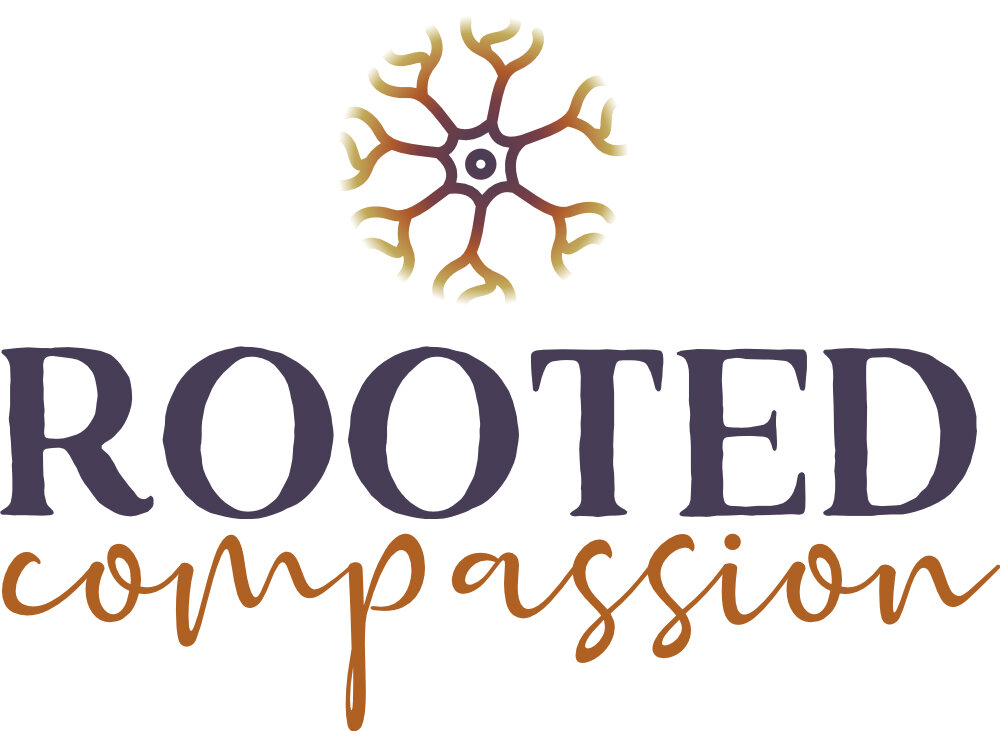Therapy Can Be More than Talking: Learn How Applied Polyvagal Theory in Therapeutic Yoga Works and How It Can Benefit You
I know what you may be thinking after reading that title, “What is Applied Polyvagal Theory in Therapeutic Yoga?”
Disclaimer: Polyvagal Theory is extremely difficult to explain in just a paragraph. The developer of the theory, Dr. Stephen Porges, has spent years (since 1969, to be exact) researching and studying psycho-physio-biology to be able to present and understand the theory as it stands today. Due to the extensive nature of the theory, I am unable to communicate what Polyvagal Theory encapsulates in one blog post. Thus, the exploration of Applied Polyvagal Theory in Therapeutic Yoga will occur in a series of blog posts. In addition, our founder, Amy Sullivan, is writing a series of blogs to explain the Polyvagal Theory. Click here to read the first one!
If you have come across my profile on our Rooted Compassion website or Psychology Today, you may have noticed that I list Applied Polyvagal Theory in Therapeutic Yoga as a specialty. You might also be wondering, what the heck does this mean? How can this approach be beneficial to my mental health treatment? You’re telling me I’m going to do yoga with my therapist?
First, let’s start with breaking down the specialty itself.
Simply put, Applied Polyvagal Theory in Therapeautic Yoga is the integration of the Polyvagal Theory with the mindfulness, breathwork, postures, and movements associated with yoga.
Through this approach, we are encouraged to integrate the understanding of our nervous system states with sensory awareness. This is done through interoception, exteroception, and proprioception. We are then able to learn how to recognize and respond effectively to various nervous system states, which improves our ability to tolerate distress.
Important terms:
Interoception: Internal sensory awareness through temperature, hunger, thirst, sleepiness, alertness, tension, pain, restlessness, etc.
Exteroception: External sensory awareness through sight, sound, smell, taste, and touch.
Proprioception: Awareness of the body in space as it relates to gravity. Connected with the vestibular system in the inner ear and the joints of the body to establish balance and position.
“Your yoga space becomes sacred ground and each time you return is a pilgrimage to your body, mind, heart, and soul” (Schwartz, p. 2).
At this point, you might still be wondering how in the world am I supposed to do yoga with my therapist. My approach is that of compassion, understanding, a hint of humor, and lack of judgment. My goal for therapeutic yoga is to create a space of safety grounded in choice. I will encourage you to reclaim how you feel safe within your body while exploring what it might look like to lean into distress with compassion. I can promise you we will not be attempting headstands (unless it is in your practice. Admittedly, it is not in mine). Rather, we will explore how your body and nervous system respond to gentle movement and breathwork.
Through an understanding of Polyvagal Theory in combination with therapeutic yoga practices, you too can learn how to increase distress tolerance, relieve chronic stress and/or pain, and begin to find a felt sense of safety within your existence.
Try This Practice:
Find a comfortable seated or lying position. Place one hand on your lower belly and one hand on your chest. Notice your breathing without trying to change it. Notice how your body is responding.
Practice breathing deeply into just your belly – bringing awareness to the rise and fall of your hand as you breathe in and out. Notice how your body is responding.
Practice breathing deeply into just your chest – bringing awareness to the rise and fall of your hand as you breathe in and out. Notice how your body is responding.
Practice breathing into both your belly and chest simultaneously – feeling the rise and fall of your hands as you breathe in and out. Notice how your body is responding.
REFERENCES:
Schwartz, A. Applied polyvagal theory in yoga: Embodiment strategies for trauma recovery, emotional health, and physical vitality.
Megan Kopack (she/her/hers) is a Licensed Professional Counselor experienced in working with those who have experienced trauma, anxiety, depression, symptoms associated with Bipolar Disorder, and Borderline Personality Disorder. She is skilled in synthesizing various therapeutic modalities including The Polyvagal Theory, Mindfulness-Based Practices, Therapeutic Yoga, Somatic-Focused Approaches, Cognitive Behavioral Therapy, and Dialectical Behavior Therapy to create a holistic approach for healing psychologically, physically, and spiritually. We are thrilled to have Megan as a part of our team!
The Rooted Compassion team is made up of a group of counselors who have a variety of specialties in order to best serve our clients. We recognize that every person has his/her own personal and unique life experiences and that one modality will not work for every client. Listed below is a summary of our counselors’ specialties at Rooted Compassion:
Emotional Freedom Techniques
Grief Counseling
Somatic Focused Counseling
EMDR
Cognitive Behavioral Therapy
Dialectical Behavior Therapy
Mindfulness-Based Practices
Trauma Responsive Care Techniques
Acceptance and Commitment Therapy
Motivational Interviewing
Gottman Couples Counseling
If you are interested in learning more about what Rooted Compassion is all about, please contact us today, look through our website, or find us on Instagram and Facebook.
Rooted Compassion Counseling is Ohio’s leading practice for trauma therapy through the lens of the nervous system. Our focus is to walk alongside clients as they heal from depression, anxiety, trauma, grief and/or loss. If you or someone you know are seeking to explore and build an inner sense of calm and safety, please contact us today. We would love to help you to find a counselor and counseling techniques that will guide you on your mental health journey to healing.


